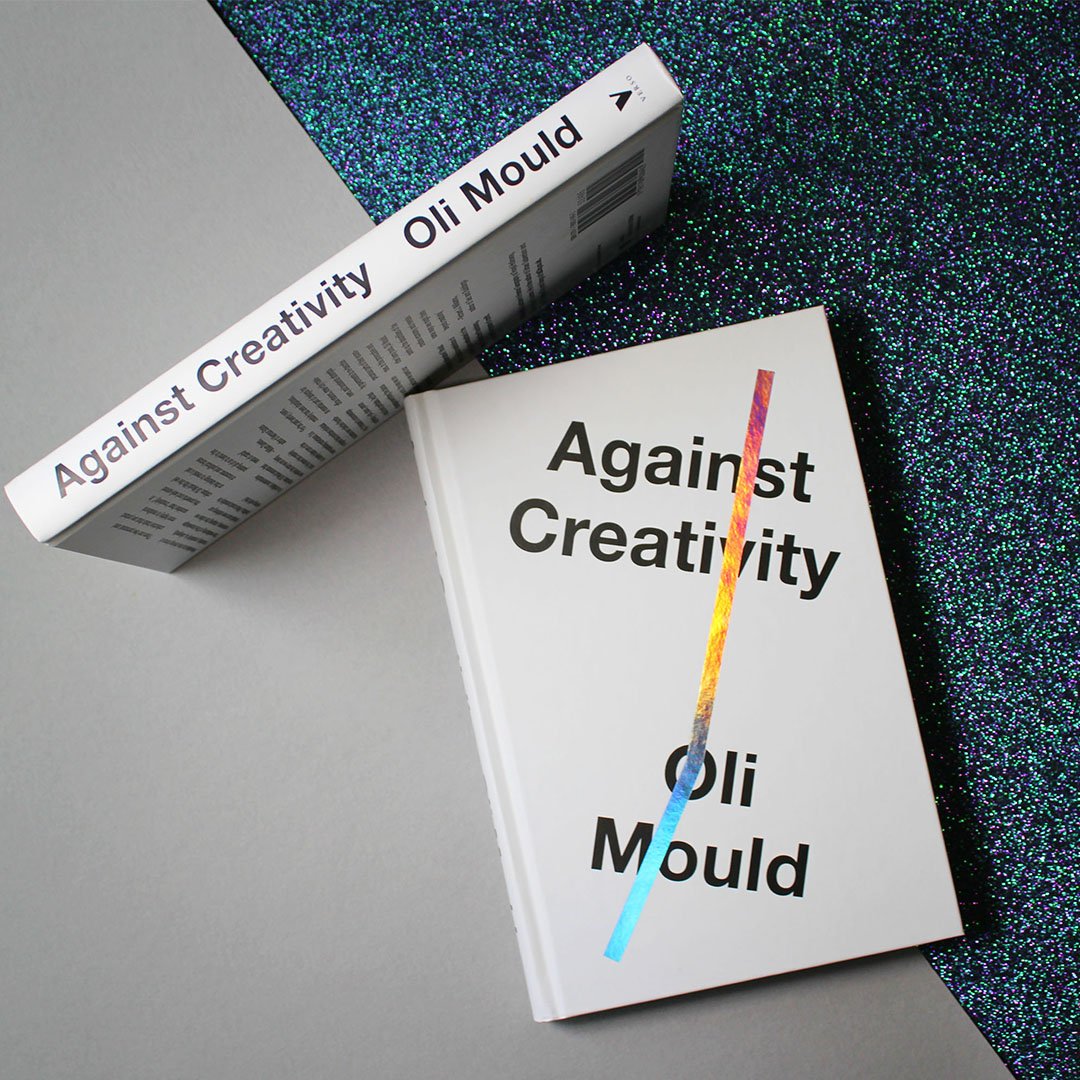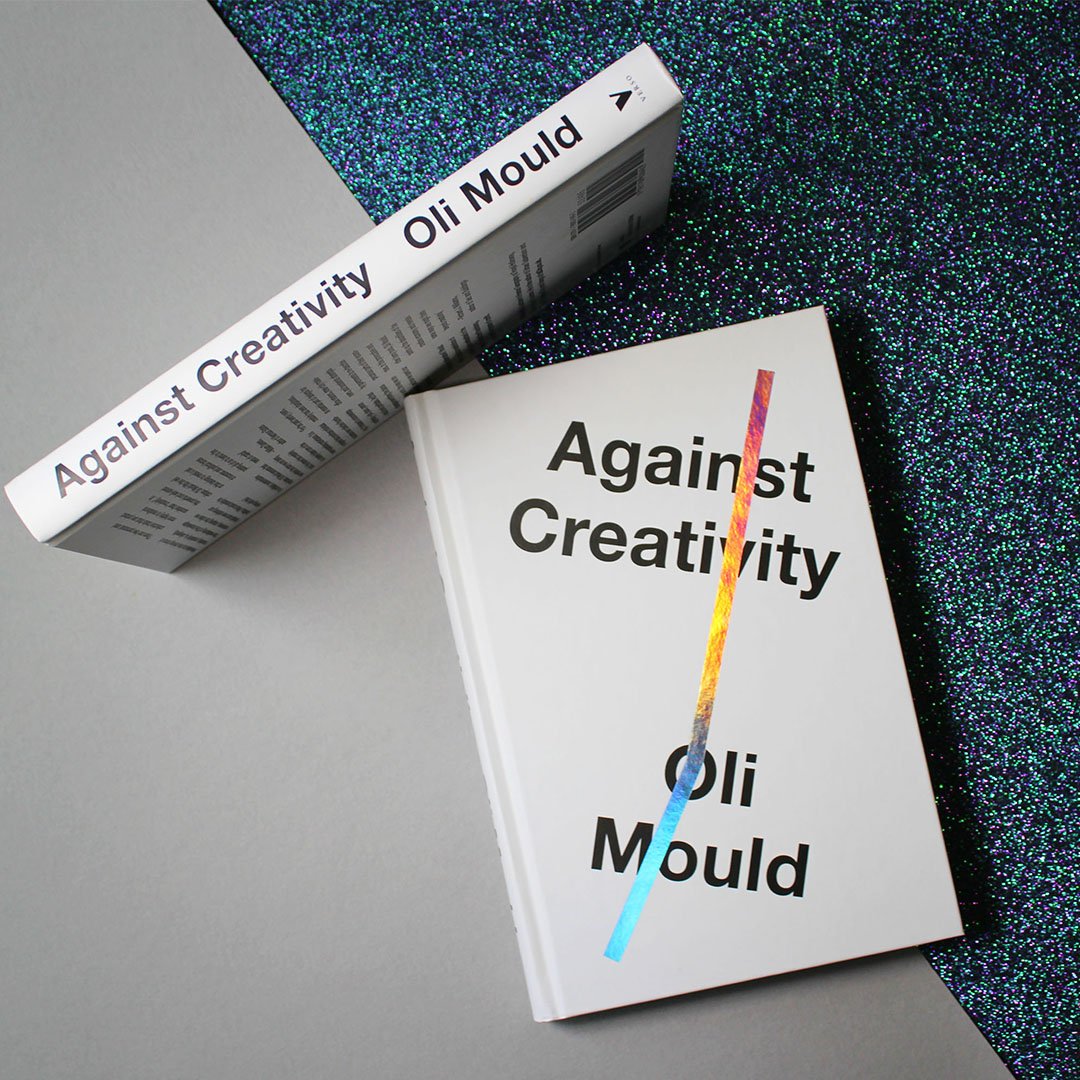
July 17, 2019
Against Design?

In the 2002 book, The Rise of the Creative Class, sociologist Richard Florida argued that a new socioeconomic class was emerging that would transform the American economy. The “creative class”, as he called it, consisted of those who skipped the office for the coffee shop, preferred dressing down instead of suits, were after autonomy instead of management bureaucracy. No more offices or cubicles, we’re all working together now, in one big space! The creative class would be filled with freelancers and contractors but also those in traditional jobs who’d use ‘creative problem solving’ to find new solutions to age-old problems. The message was simple: we’re all ‘creatives’ now.
In the new book, Against Creativity, political geographer Oli Mould calls into question this optimistic view of creativity. By applying a Marxist reading to our culture’s obsession with creativity — and Florida’s entire thesis on the creative class — Mould argues that much of what we call ‘creative’ today is not creative at all but rather cementing the status quo, forever in the service of capital, labor, and consumption. “Today, the system that causes homelessness—and the other related injustices: precariousness, racism and the emboldening of fascism, massive inequality, global health epidemics and the rest – is the very same system that tells us we must be ‘creative’ to progress,” Mould writes in the introduction, “This is because capitalism of the twenty-first century, turbocharged by neoliberalism, has redefined creativity to feed its own growth. Being creative in today’s society has only one meaning: to carry on producing the status quo. The continual growth of capitalism has become the prevailing order of life.”
In six successively expansive chapters, Mould looks at the transformation of people, work, politics, technology, and the city, calling into question the myths of creativity’s world-changing powers: “Don’t believe the lie,” he writes. The creativity that Florida pitched to us as liberating also brought us performative productivity (open floor plans), the ‘art-washing’ of our cities (gentrification), algorithmic recommendations (artificial intelligence), and reality-show politics (you-know-who).
[D]esign must shift from colonizer to democratizer. We must move away from the designer-savior industrial complex that tells us the designer can parachute into any problem and, with some design thinking, fix it, indicating change from the top-down.
Perhaps no industry has benefitted as much from the rise of creativity as design and we can read Against Creativity as a book about the state of design: we now live in a world where we can buy designer clothes, companies promote being design led, businesses design their supply chains, politicians design policy plans, and we’re all designing our personal brands on social media. “Design,” as Mark Wigley and Beatriz Colomina write in their 2016 book, Are We Human?, “has gone viral.”
A decade ago, when I was studying graphic design as an undergraduate, I remember hearing two messages: design can be a force of social good and that designers need to ‘have a seat at the table’. At the time, these seemed like two strands on the same thread, if designers were in more leadership positions, we’d be able to use our skills to make the world a better place. Designers have a seat at the table now — the Chief Design Officer is a common title — but what have we done with this newfound power? More posters? More superficial rebrands? More design thinking?
In many ways, ‘design thinking’ is a design-centered repackaging of Florida’s vision for creativity. Popularized by IDEO in a 2008 article by CEO Tim Brown in the Harvard Business Review, Brown positioned design thinking as a new methodology for businesses to transform their products, services, and strategy. By moving design from the end of the process — the decoration — to the beginning, designers would now shape every area of a customer experience. When you see your job as a problem solver, suddenly everything looks like a problem that needs to be solved from food deserts in Africa to death itself. And you too can be a design thinker: just buy the cards!
But like Mould’s assessment of creativity, nearly all forms of design — and none more so than design thinking — are used in the service of capitalism, again preserving the status quo. Design thinking at its most cynical has devolved into a pseudo-creativity; a rote process, magic potion executives can throw around to *feel* more creative. In an essay published last year — also in the Harvard Business Review! — Natasha Iskander points out the limits of ‘design thinking’:
[Design thinking], at its core, is a strategy to preserve and defend the status-quo — and an old strategy at that. Design thinking privileges the designer above the people she serves, and in doing so limits participation in the design process. In doing so, it limits the scope for truly innovative ideas, and makes it hard to solve challenges that are characterized by a high degree of uncertainty — like climate change — where doing things the way we always have done them is a sure recipe for disaster.
It’s not just design thinking. Design, in the broader sense, has been reduced to a buzzword — along with words like ‘innovation’, ‘storytelling’, and ‘authenticity’ — that can be sprinkled on anything. This is the thinking that brought us the commercialization of the Pride parade, handlettered signs for the homeless, and the fetishization of brand style guides. We cannot assume that design is an inherently good thing. Design can connect but it also creates filter bubbles. It can spread brand messages but also fake news. It can preach sustainability while also furthering consumerism.
Designers have a seat at the table now — the Chief Design Officer is a common title — but what have we done with this newfound power? More posters? More superficial rebrands? More design thinking?
Despite Mould’s dire outlook, he does see a path forward, a path that can subvert, and live outside of, the capitalist system. “Creativity could be – indeed, should be,” he writes, “thought of more as an emancipatory force of societal change.” This, too, should be a goal of design. “Design—which traffics in but is not beholden to consumer culture—does not matter because it is hip or hot or cool or cheap or new or rare or bold or sexy,” writes Jessica Helfand in her 2015 book, The Invention of Desire, “Design matters because of the why, not the what; the sentiment, not the acquisition. Design matters because people matter.” The rise of co-design movements is a path forward, so are open source communities and discussions around decolonizing design. “decoloniality is about shattering the familiar.” says Decolonizing Design co-founder Danah Abdulla, “[Design today] does not disrupt the status quo, it does not disorder the established order. Decoloniality is about reimagining something beyond the current system we exist in.”
“Creativity,” Mould writes, “is about searching for, giving space to, and trying to realize the impossible.” Design, too, is an inherently future-looking profession. It can imagine futures that are more equitable, more inclusive, more humane. But to do this, design must shift from colonizer to democratizer. We must move away from the designer-savior industrial complex that tells us the designer can parachute into any problem and, with some design thinking, fix it, indicating change from the top-down. We need to move away from giving lip service to empathy without any action. We need to move away from design for design’s sake, from award-driven work, from superficial decoration masquerading as change.
In 1979, before design thinking had been co-opted by business, Bruce Archer, an engineer turned designer and educator, published Design as disclipine in the first issue of the then-new design journal Design Studies, positioning design thinking as a fundamental component of general education, alongside the sciences and humanities. Design, here, is not a deck of cards that’ll help you solve problems or some templates and style guides but a way of understand our material culture and find new ways to push it forward. Design, as Archer sees it, as a liberal art, could be a tool not of capitalism, but of liberation. A tool not just for designers, but for everyone. We need to get out of our own way.
Observed
View all
Observed
By Jarrett Fuller
Related Posts

Graphic Design
Sarah Gephart|Essays
A new alphabet for a shared lived experience

Arts + Culture
Nila Rezaei|Essays
“Dear mother, I made us a seat”: a Mother’s Day tribute to the women of Iran

The Observatory
Ellen McGirt|Books
Parable of the Redesigner

Arts + Culture
Jessica Helfand|Essays
Véronique Vienne : A Remembrance
Recent Posts
Mine the $3.1T gap: Workplace gender equity is a growth imperative in an era of uncertainty A new alphabet for a shared lived experience Love Letter to a Garden and 20 years of Design Matters with Debbie Millman ‘The conscience of this country’: How filmmakers are documenting resistance in the age of censorshipRelated Posts

Graphic Design
Sarah Gephart|Essays
A new alphabet for a shared lived experience

Arts + Culture
Nila Rezaei|Essays
“Dear mother, I made us a seat”: a Mother’s Day tribute to the women of Iran

The Observatory
Ellen McGirt|Books
Parable of the Redesigner

Arts + Culture
Jessica Helfand|Essays
